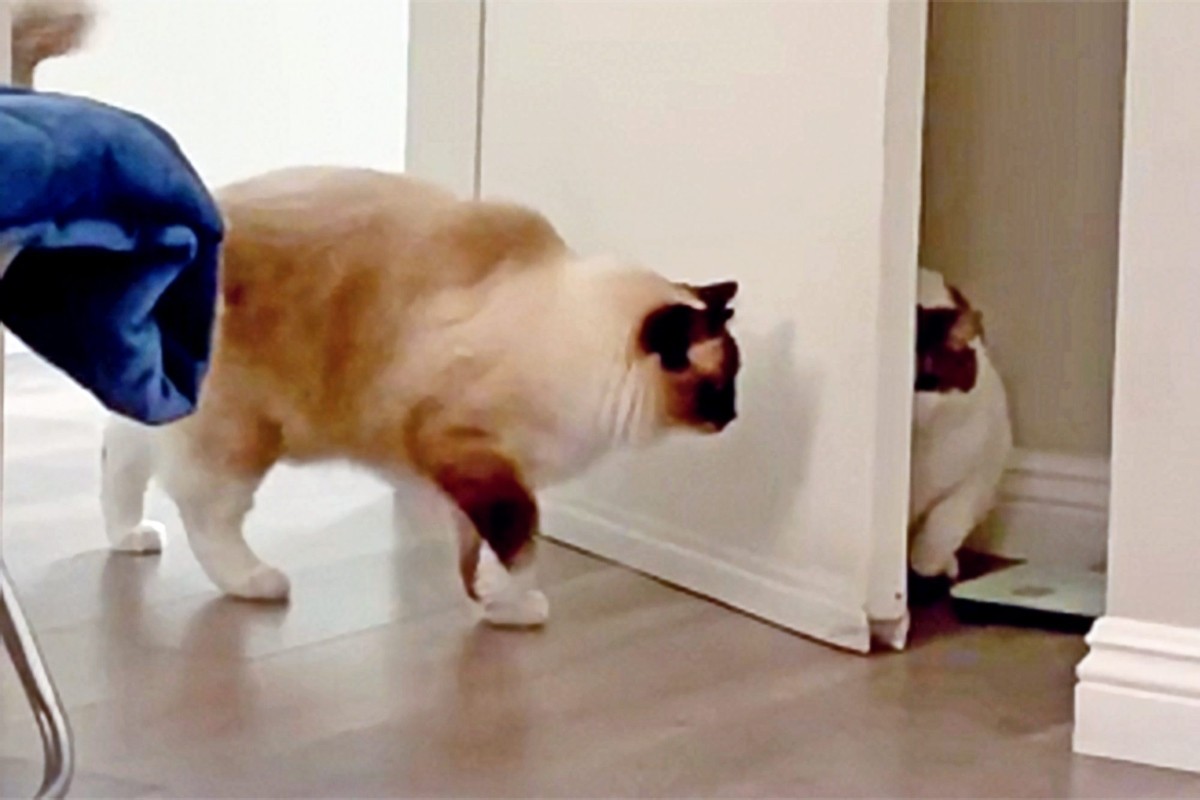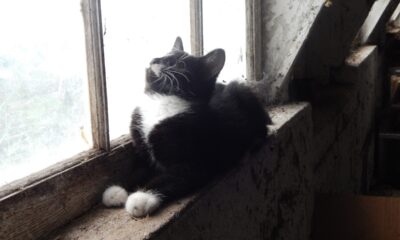Cute Animals
Intriguing Insights: Weird Cat Behaviors You Should Pay Attention

Quick Smiles:
- Scientists reveal what’s normal and abnormal in cat behavior.
- Study helps cat owners identify warning signs and address issues.
- Cat behavior varies based on factors like breed, sex, and environment.
Cats are known for their quirky and entertaining antics, but it can be challenging to determine which behaviors are normal and which are not. Fear not, cat lovers! A new study published in the Journal of Veterinary Behavior has shed light on what’s considered typical and what might be cause for concern.
Researchers from various institutions surveyed 816 cat owners, using a specially designed questionnaire to analyze their pets’ behavior. They discovered that curiosity about new objects or surroundings was quite common, with 82 percent of cats displaying this trait. Purring when being stroked was also prevalent, occurring in about 81 percent of the feline participants.
On the other hand, behaviors like spraying outside the litterbox, sudden frantic licking or chewing, pacing, growling, and hissing were identified as rarely or never happening by more than 90 percent of owners. “Understanding normal behavior helps improve animal welfare, and especially so with cats, whose antics can be as mystifying as they are cute,” said the study’s lead author, David J. Menor-Campos of the Universidad de Córdoba in Spain.
Menor-Campos emphasized the importance of cat owners recognizing what’s normal and abnormal for their pets, as it allows them to spot warning signs and address behavioral or health issues before they worsen. The study also found that female cats tended to be more aggressive and easily frightened, while male cats were friendlier, more sociable, and more vocal.
Interestingly, a cat’s environment also played a role in their behavior. Cats living in rural settings were less playful and more likely to hunt compared to those in smaller apartments. The researchers concluded that various factors, such as breed, sex, reproductive status, age, source of acquisition, and environment, significantly influenced cats’ behavior.
Other factors that may affect feline behavior include the type of home, sleep preferences, time alone, and the presence of other pets. The authors hope that their findings will help cat owners more efficiently identify concerning behaviors. As one of the most popular pets, increasing knowledge about cat behavior is beneficial for both current and future cat owners, enabling them to make informed decisions when acquiring or dealing with a cat.
Moreover, this knowledge can help clinicians detect behavioral changes that may indicate medical conditions or welfare issues, allowing them to provide proper guidance to cat owners. So, keep an eye on your furry friends and enjoy their delightful quirks, knowing that you’re better equipped to understand and care for them!

-

 Cute Animals9 months ago
Cute Animals9 months agoPuppy Love Patrol: Service Dog Swoons Over K9 Officer Neighbor
-

 Cute Animals1 year ago
Cute Animals1 year agoHugs, Hooves, and Happiness: Newborn Donkey Steals Hearts by Demanding Affection [Video]
-

 Cute Animals12 months ago
Cute Animals12 months agoWATCH: A German Shepherd’s Surprising Parenting Instinct for Lost Ducklings!
-

 Cute Animals1 year ago
Cute Animals1 year agoPetty Pup Pulls Off Hilarious Bone Heist [Video]
-

 Heroes11 months ago
Heroes11 months agoA Lost Dog’s Bark Leads to a Lifesaving Discovery
-

 Cute Animals1 year ago
Cute Animals1 year ago“Pure Love”: Adopted Rescue Dog Can’t Hide How Grateful He Is [Video]
-

 Cute Animals12 months ago
Cute Animals12 months agoAdorable Puppy Steals Hearts After a Tiring Swim [Video]
-

 Cute Animals1 year ago
Cute Animals1 year agoTiny but Mighty: Cat with Dwarfism Becomes Internet Star as Owners Adapt Backyard for Her Comfort